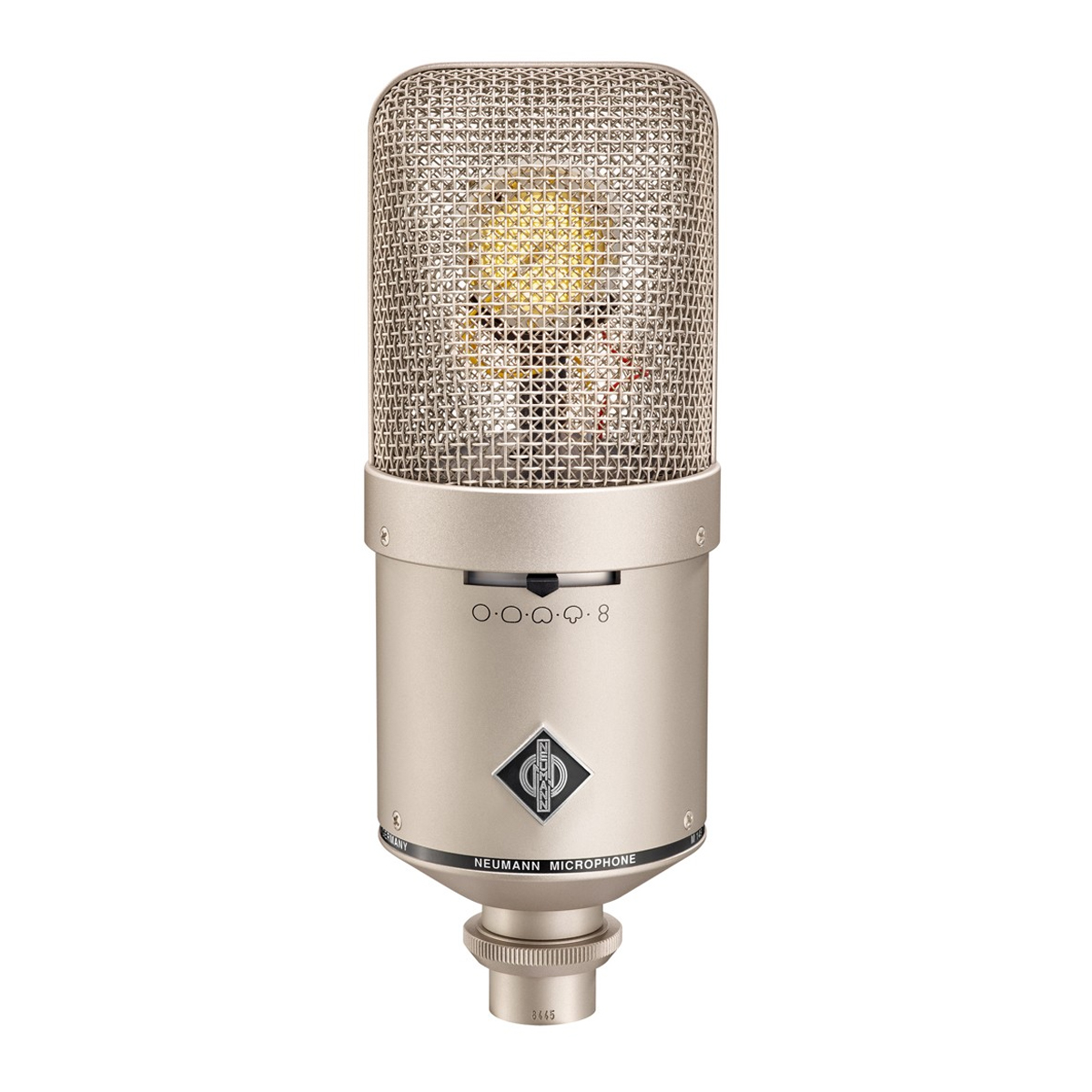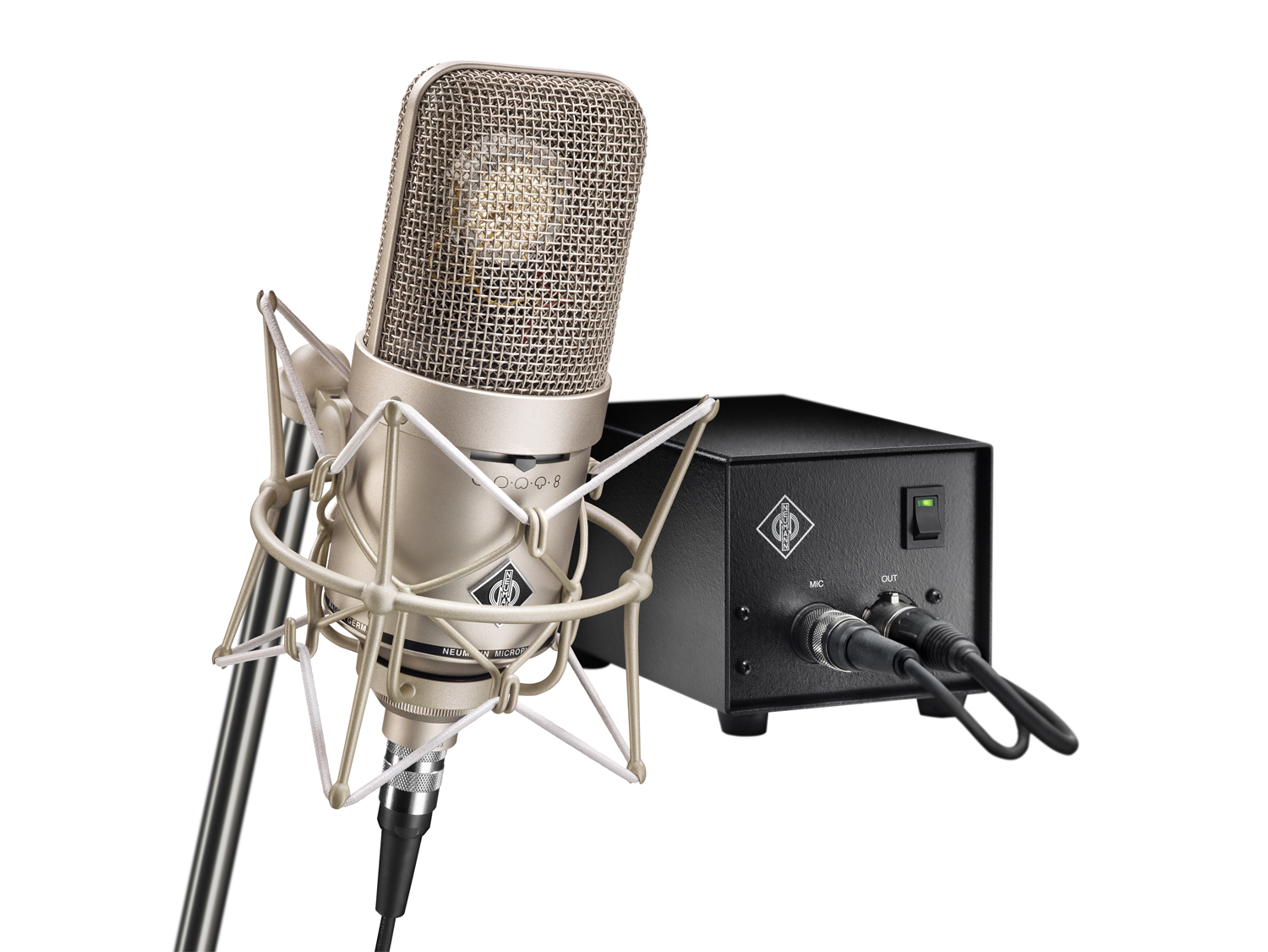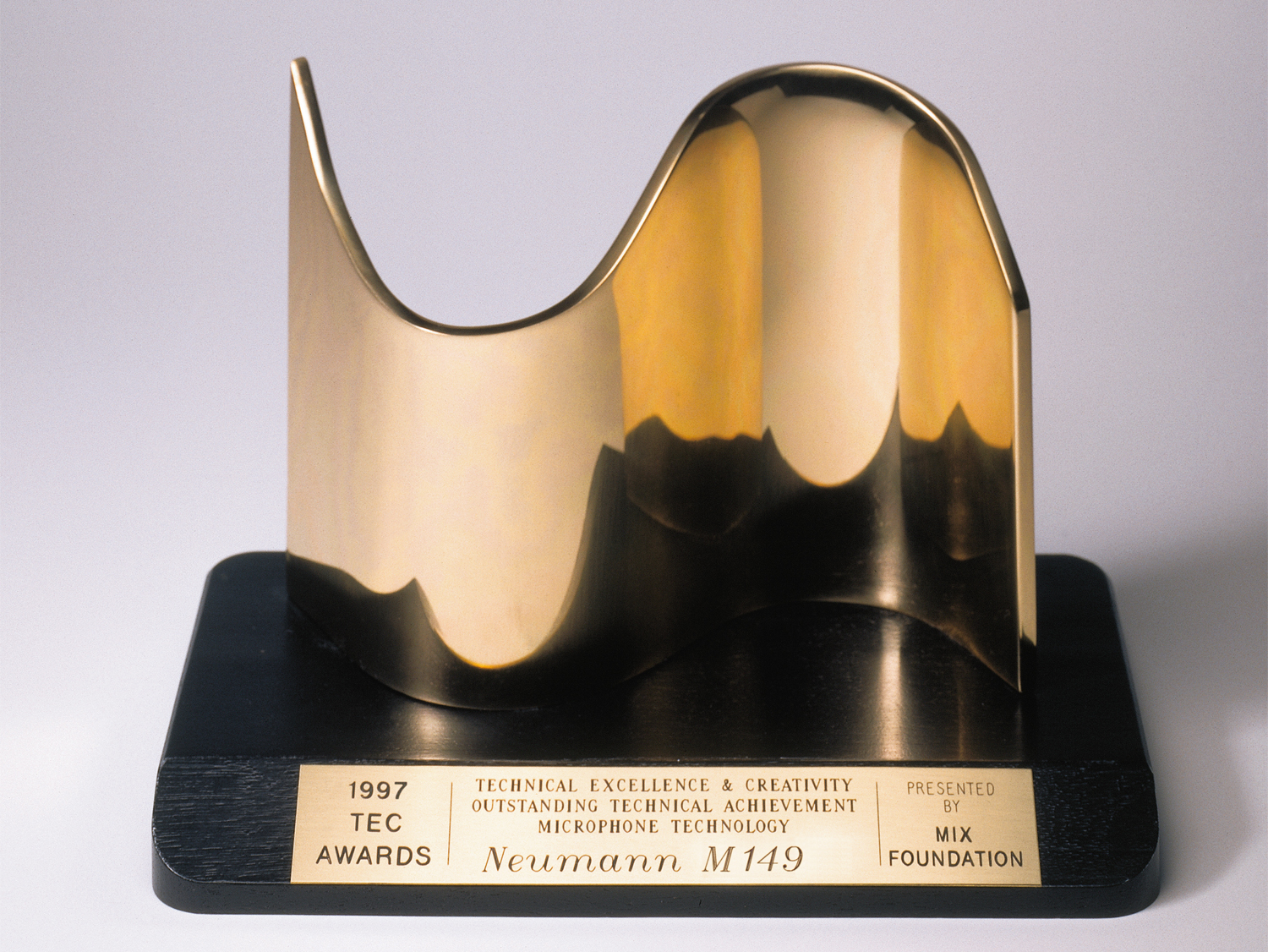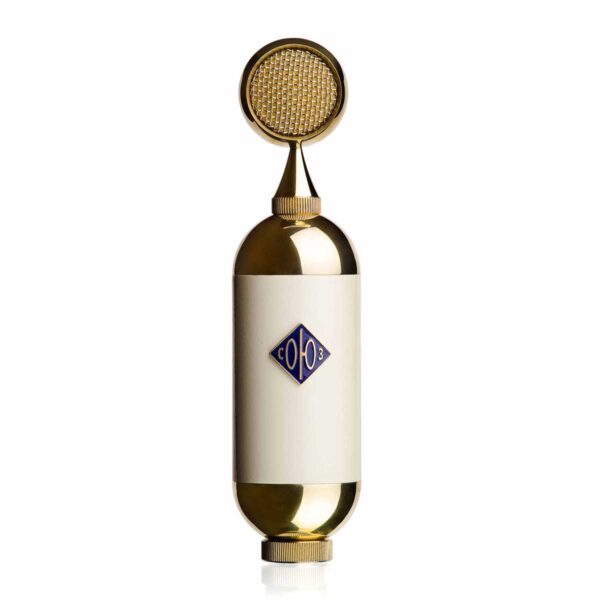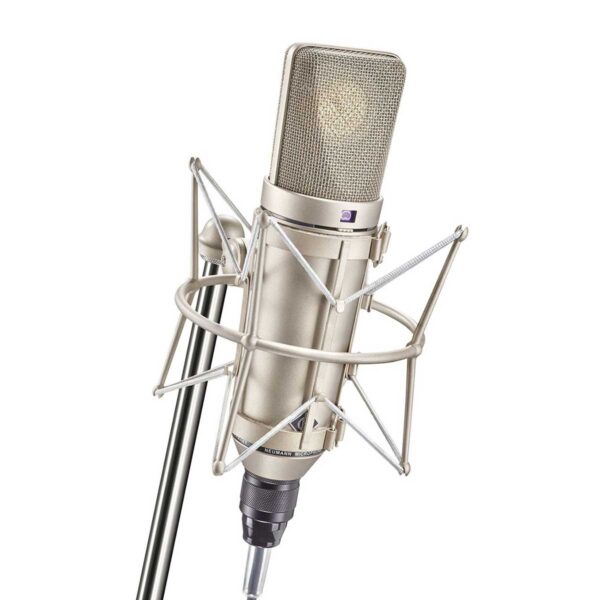Neumann M 149 Tube Microphone
An awful lot of top engineers and artists prize the M149 for it’s full-bodied sound and high output, capable of driving almost line level if required (and too hot for some mic preamps such as the DW Fern, so take care). Generally overlooked by Gearsnobz these days, the M 149 is actually a very serious contender for the highest quality vocals and well worth the price tag.
Now, this is nothing like the original, classic, Neumann M49 but (unlike the peculiar M147) it’s a great mic and has become well regarded for vocals and strings.
Well made, well packaged and complete with a sturdy, typlically Neumann suspension, this mic has both sparkle and depth, enabling vocals to stand out in a mix without having to push the fader. It has an unusually high output, and rumour has it that it can drive line level inputs on units such as an 1176, negating the mic pre. Indeed, it can be too ‘hot’ for some pre’s, hence manufacturers such as DW Fern making option pad stages for their preamps specifically for the M149.
What the manufacturer says…
The universal high-end tube microphone with a unique sound and a comprehensive selection of settings, including 15 directional characteristics and a 7-level low-cut filter! The capsule is derived from that of the legendary U 47 and M 49.
The NeumannM 149 Tube is a variable dual-diaphragm microphone. The K 49 capsule – well-known from the legendary U 47 and M 49 microphones – is followed by a tube functioning as an impedance converter. In contrast to earlier concepts – utilizing a transformer – the tube is complemented with a transformerless output circuit design. The M149 Tube can thus feed long microphone cables without any coloration.
Two slide switches are located below the large, acoustically very open headgrille. The switch at the front allows selection one of nine directional patterns. The slide switch at the rear operates a seven-step high pass filter. It allows a very fine adjustment of the cut-off frequency.
Applications of the Neumann M 149
There are nine polar patterns to choose from, making this microphone an ideal choice for a wide range of recording situations.
As its ancestors, the M 149 Tube is a superb vocalist microphone, not only because of the capsule, but also due to its modern circuitry, characterized by extremely low noise level.
Acoustic features of the M 149
The Neumann M 149 Tube is addressed from the front, marked with the Neumann logo. Also on the front is the switch for the selection of the polar patterns.
The capsule is mounted elastically inside the headgrille to eliminate structure borne noise. The surface below the capsule is shaped like a cone to disperse any reflected sound from the acoustic upper half space. This avoids any interference with the primary sound arriving at the capsule directly.
A large headgrille surrounds the capsule. It is acoustically very open and therefore increases the sonic realism.
Polar patterns of the M 149
The polar pattern switch selects one of nine directional patterns: omnidirectional, wide-angle-cardioid, cardioid, hypercardioid, figure-8, and one additional intermediate pattern between each major position.
Electrical features of the M 149
The circuit of the M149 Tube microphone has been developed to exceed traditional designs. We have selected a modern tube (triode) and combined its exceptional transmission characteristics with the advantages of our proven transformerless output circuit.
The aim was to provide a more controlled environment for the audio signal on its path from the capsule to the output section.
The final stage is an integrated amplifier, especially designed for such applications. It features very low distortion (THD < 0.002 % at ± 10 V), very low self-noise, and high output current capability.
As a result, the tube circuit is completely decoupled from the microphone output and its characteristic response curve will be unaffected by very high signal levels or varying load conditions.
The lower output impedance and higher output current capability allow cable lengths up to 300 m (1000 feet) without any degradation of the audio signal.
The tube amplifier changes the high impedance of the capsule and adds 10 dB of gain to the audio signal, providing optimum operating specifications. The wide dynamic range is impressive, as peak output can be ±10 V, at 20 mA.
The ideal operating point of the tube is maintained throughout its entire life expectancy. Plate current and filament voltage are constantly regulated. A sensor circuit monitors and compensates for any voltage drop across the microphone cable. The tube is heated up slowly through inverse current limiting to guarantee long life. Optimum operating conditions are reached within a very short time.
Filter
A seven-position slide switch is located on the back of the microphone. It selects a high-pass filter, advancing in half-octave steps between 20 Hz and 160 Hz (-3dB). This filter is useful to suppress rumble from air-conditioning and in windy situations.
In addition, the filter provides an effective tool to control the audio signal when the microphone is used at close distance and therefore proximity effect alters the program material.
Delivery Range
The specifically designed N 149 A power supply unit feeds the M 149 Tube through an 8-core cable. The output connector for the audio signal is a 3-pin XLR. The output signal is balanced.
The microphone comes as a set in an attractive aluminium case, together with the 8-core microphone connecting cable, the N 149 A power supply with plug-in mains unit, the EA 170 full elastic microphone suspension and a dust cover.
What’s in the box
- M 149 Tube Microphone
- N 149 A Power Supply incl. Power Cable
- KT 8 Connecting Cable
- EA 170 Shock Mount
- Dust Cover
- Aluminium Case
Specifications
- Acoustical operating principle Pressure gradient transducer
- Directional pattern Omnidirectional, wide angle cardioid, cardioid, hypercardioid, figure-8 plus one intermediate position each
- Frequency range 20 Hz … 20 kHz
- Sensitivity at 1 kHz into 1 kohm 34/47/62 mV/Pa1)
- Rated impedance 50 ohms
- Rated load impedance 1 kohms
- Equivalent noise level, CCIR2) 28/25/23 dB1)
- Equivalent noise level, A-weighted2) 16/13/11 dB-A1)
- Signal-to-noise ratio, CCIR2) (rel. 94 dB SPL) 66/69/71 dB1)
- Signal-to-noise ratio, A-weighted2) (rel. 94 dB SPL) 78/81/83 dB1)
- Typical SPL (tube characteristic)3) K < 0,5 %: 120 dB, K < 5 %: 136 dB
- Maximum output voltage 18 dBu
- Powering Power supply N 149 A
- Matching connectors Microphone DIN8F, Power supply XLR3F
- Weight 730 g
- Diameter 70 mm
- Length 201 mm

